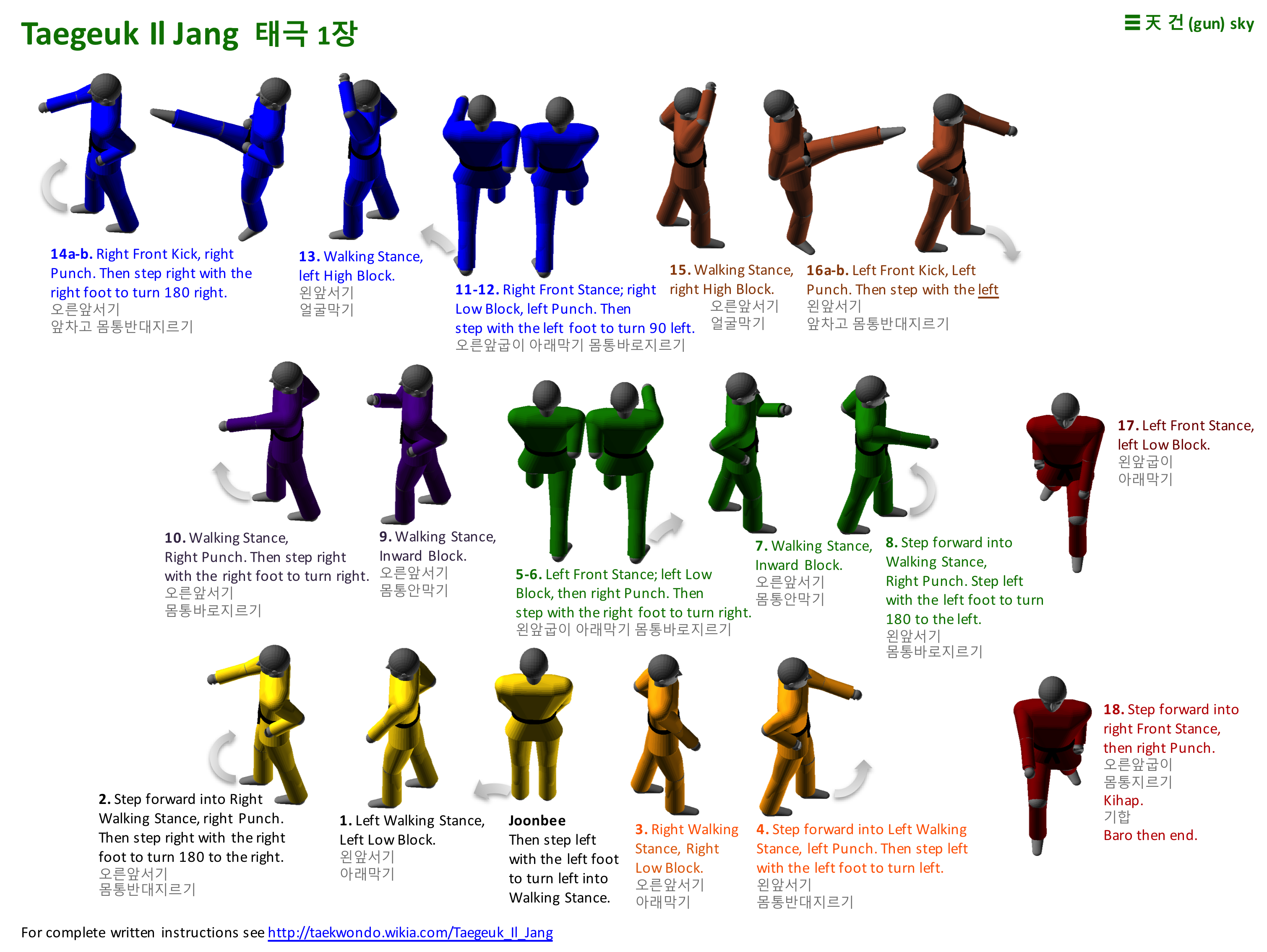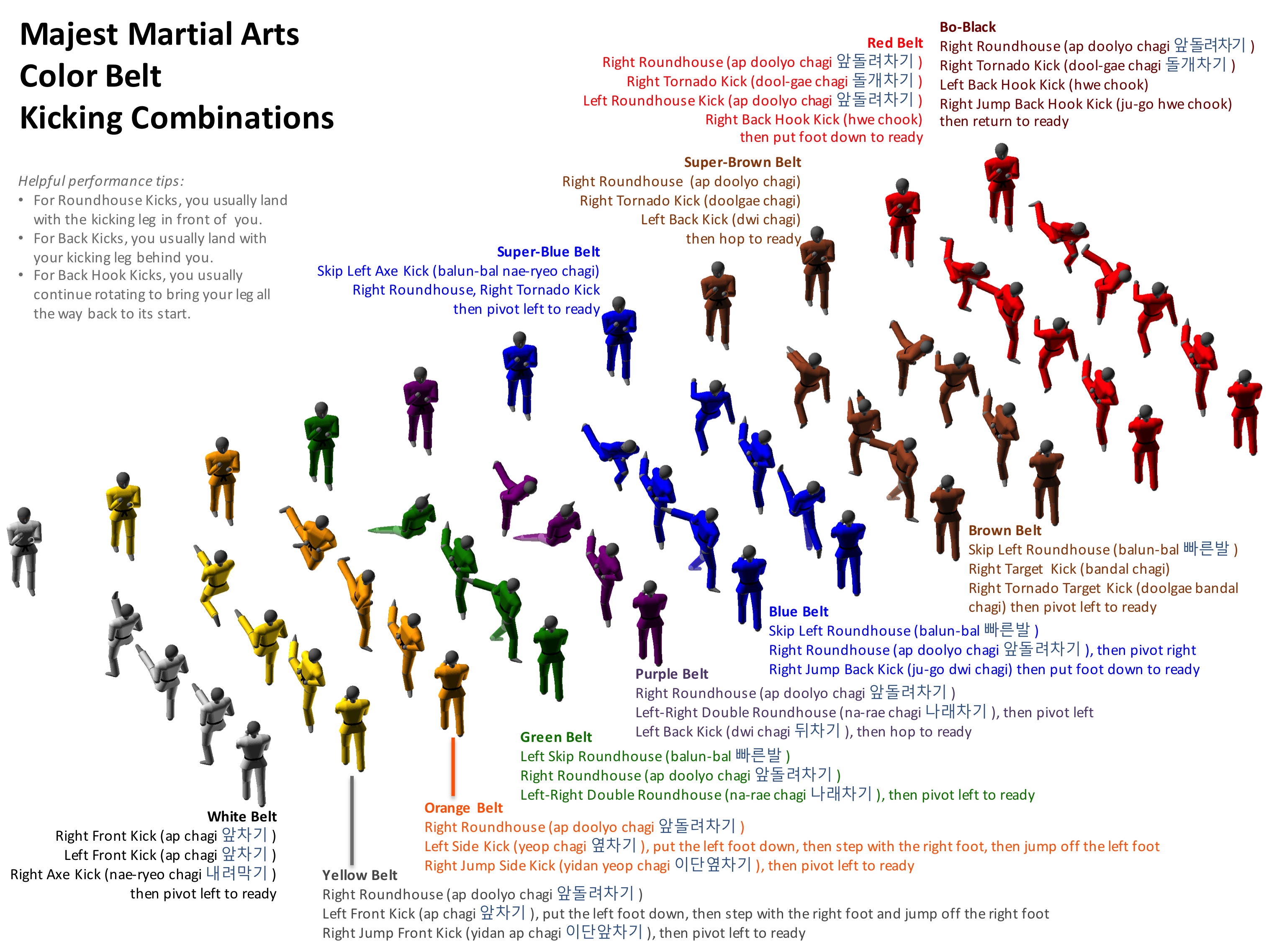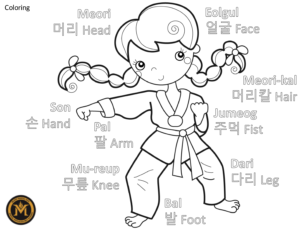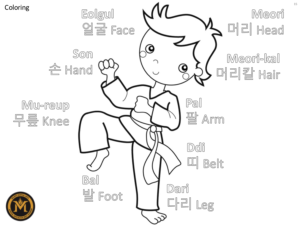Green Belt Curriculum
Majest Martial ArtsAt Green Belt, Majest students begin to study the first of the Taegeuk series of poomsae. There are 8 poomsae in this series, numbered using the Sino-Korean numbering system: Il, Yi (or Ee), Sam, Sa, Oh, Yook, Chil, Pal — for numbers 1 through 8. Each poomsae in this series is associated with a trigram denoting a force of nature from the ancient I Ching; the trigram for Taegeuk Il Jang (☰) represents “sky”, symbolizing a clear open mind, ready to begin the study of this new series of poomsae.
Taegeuk Il Jang introduces students to one new stance (the Walking Stance) and one new technique (the Front Kick). As with previous poomsae, the key to success here is not just how to make the stance, but how to transition from one stance to the next. The turn at the end of Step 16b is often the trickiest transition for younger students especially, as they must turn with the outside leg rather than the inside leg.
The following videos demonstrate how to perform this poomsae as well as the Majest Green Belt kicking combination and board-breaking technique. You can read more about Taegeuk Il Jang, including step-by-step instructions, here: Taegeuk Il Jang.
7th gup - Green Belt, Taegeuk Il Jang (step by step)
The following video is a slow, step-by-step performance of Taegeuk Il Jang. At the 1:03 mark, notice how the performer kicks while maintaining balance the entire time, then lands gently into Walking Stance afterward — as opposed to a kick that results in an unbalanced drop into Walking Stance. This is what students will strive for in the long run, though it can take many months of practice to accomplish this well.
7th gup - Green Belt, Taegeuk Il Jang (with written instructions)
7th gup - Green Belt, Taegeuk Il Jang
The following video shows Taegeuk Il Jang performed at normal speed.
7th gup - Green Belt breaking
This video demonstrates the Green Belt breaking technique, a Side Kick. The goal is to be able to break a board that’s held above waist-height, which requires good flexibility. As with all board breaks, the key is not just power, but also accuracy — even a strong kick to the edge of the board generally isn’t going to break the board. Instead, you must kick the center of the board, which requires exercising fine control of the large muscle groups in the legs and hips.
7th gup - Green Belt kicking combination
This video demonstrates the Majest Green Belt kicking combination: a Skip Roundhouse (balun-bal) with the left foot, a Roundhouse Kick (ap-doolyo chagi) with the right foot, then a Double Roundhouse (na-rae chagi).
7th gup - How Parents Can Help
Here are things you as a parent can do to help your child with Green Belt (7th gup) homework:
- Have your child perform the poomsae for you at home. Some things to look for:
- In the previous poomsae, your child should have learned the correct chamber for low blocks and high blocks. Make sure your child is still chambering for these blocks correctly.
- For low blocks, the blocking fist is chambered with the fleshy part of the fist on the collar-bone. The other arm is aimed loosely forward.
- For high blocks, the blocking fist is chambered at the opposite waist, palm up. The other fist is chambered with the thumb facing the opposite collarbone.
- This poomsae introduces the inside middle block. Let’s talk about the chamber: the blocking arm is chambered out to the side, with the fist at about shoulder-height, fist turned away from the body. The other arm is aimed loosely forward. The blocking arm should try to “lead with the elbow” as it arcs inward, to end with the blocking fist centered in front of the sternum. As your child practices this poomsae, make sure they perform a good inside middle block.
- In the previous poomsae, your child should have learned the correct chamber for low blocks and high blocks. Make sure your child is still chambering for these blocks correctly.
- By this time, your child should have done at least 4-5 months worth of hamstring stretches and splits, so their flexibility should be markedly improved. When they perform the front kick near the end of this poomsae, make sure your child aims with the knee first, then snaps the shin outward to kick.
- By this point, your child should probably have little difficulty performing a front-kick above belt-height; if she or he does, continue to work on the hamstring stretches together.
- By this point, your child should probably have little difficulty keeping the ankle straight during a front-kick (so that the striking surface is the top of the foot); if he or she does, continue to work the Yellow Belt and Orange Belt ankle-drills together (previously explained on this website at those pages).












